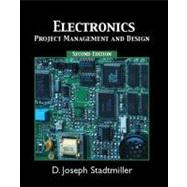
Note: Supplemental materials are not guaranteed with Rental or Used book purchases.
Purchase Benefits
Brian Fagan is one of the leading archaeological writers in the world and an internationally recognized authority on world prehistory. He studied archaeology and anthropology at Pembroke College, Cambridge University, and then spent seven years in sub-Saharan Africa working in museums and in monument conservation and excavating early farming sites in Zambia and East Africa. He was one of the pioneers of multidisciplinary African history in the 1960s. Since 1967, he has been Professor of Anthropology at the University of California, Santa Barbara, where he has specialized in lecturing and writing about archaeology to wide audiences.
Professor Fagan has written six best-selling textbooks: Ancient Lives: An Introduction to Archaeology and Prehistory; In the Beginning; Archaeology: A Brief Introduction; World Prehistory; Ancient Civilizations (with Chris Scarre); and this volume-all published by Prentice Hall-which are used around the world. His general books include The Rape of the Nile, a classic history of Egyptology; The Adventure of Archaeology; TimeDetectives; Ancient North America; The Little Ice Age; and Before California: An Archaeologist Looks at Our Earliest Inhabitants. He was also General Editor of the Oxford Companion to Archaeology. In addition, he has published several scholarly monographs on African archaeology and numerous specialized articles in national and international journals. He is also an expert on multimedia teaching and the recipient of the Society for American Archaeology's first Public Education Award for his indefatigable efforts on behalf of archaeology and education.
Brian Fagan's other interests include bicycling, sailing, kayaking, and good food. He is married and lives in Santa Barbara with his wife and daughter, four cats (who supervise his writing), and last but not least, a minimum of four rabbits.
| The Project Environment | |
| Managing Electronic Development Projects | |
| Approval Agencies | |
| The Six Steps | |
| Step One: Research and Gathering Information | |
| Step Two: Define the Problem (Develop Design Specifications) | |
| Step Three: Develop a Solution Plan (Project Scheduling) | |
| Step Four: Execution (The Preliminary Design) | |
| Step Four: Execution (Component Selection) | |
| Step Four: Execution (The Design Breadboard) | |
| Step Four: Execution (Prototype Development) | |
| Step Five: Verify the Solution (The Design Verification) | |
| Step Six: Conclusion (Design Improvements and Project Performance Monitoring) | |
| Component Reference Information | |
| Test Equipment | |
| Miscellaneous Contact Information | |
| Table of Contents provided by Publisher. All Rights Reserved. |
The New copy of this book will include any supplemental materials advertised. Please check the title of the book to determine if it should include any access cards, study guides, lab manuals, CDs, etc.
The Used, Rental and eBook copies of this book are not guaranteed to include any supplemental materials. Typically, only the book itself is included. This is true even if the title states it includes any access cards, study guides, lab manuals, CDs, etc.